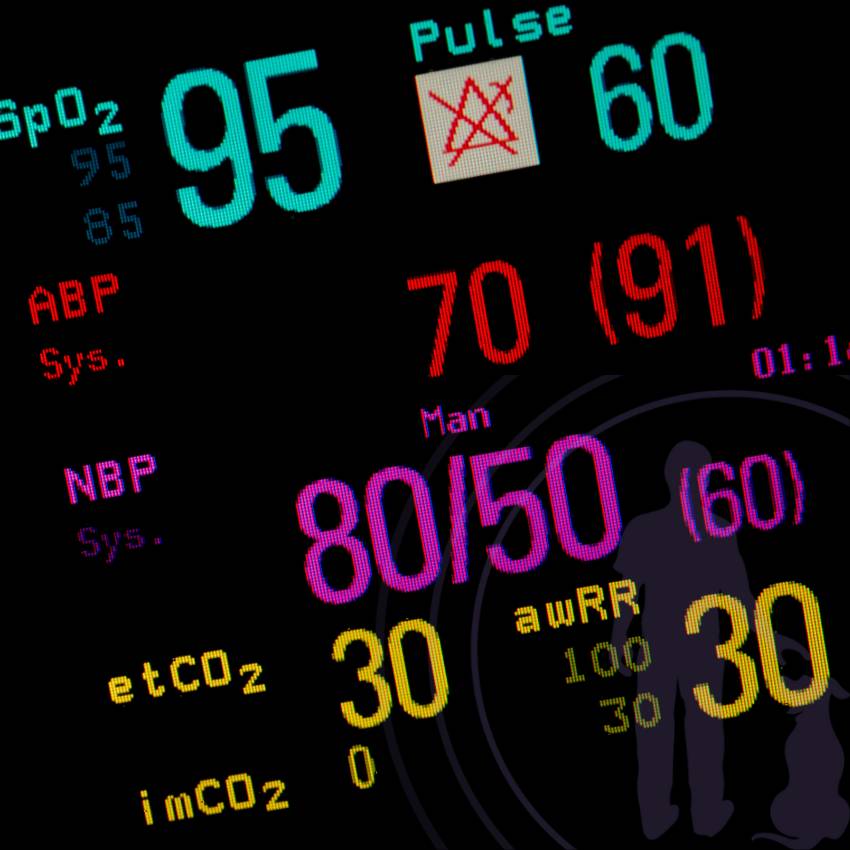Understanding Canine Vital Signs
Monitoring your dog’s vital signs is critical for maintaining their health and well-being. By understanding what normal looks like, you can quickly identify when something might be wrong, ensuring that your furry friend receives prompt medical attention when necessary.
Overview of Essential Vital Signs in Dogs
Vital signs are indicators of an animal’s most important physiological state. For dogs, the key vital signs include heart rate, blood pressure, respiratory rate, and body temperature. These parameters provide insight into cardiovascular, respiratory, and overall health.
Normal Ranges for Vital Signs
Dogs have specific normal ranges for their vital signs, which can vary based on factors like age, breed, and size. It’s essential to know these ranges to recognize potential health problems.
Heart Rate (Pulse)
- Small breeds: 90–160 BPM
- Medium breeds: 70–120 BPM
- Large breeds: 60–100 BPM
- Puppies: 120–160 BPM
Blood Pressure
- Normal systolic range: 110–160 mmHg
- Normal diastolic range: 60–100 mmHg
Respiratory Rate
- Normal resting rate: 10–35 breaths per minute
Body Temperature
- Normal range: 100.5–102.5°F (38–39.2°C)
Factors That Influence Vital Sign Measurements
Several factors can affect the measurements of a dog’s vital signs:
- Breed Size: Smaller breeds typically have a higher heart rate than larger breeds. For instance, a Chihuahua might have a normal heart rate of up to 160 BPM, whereas a Great Dane’s heart rate might be as low as 60 BPM.
- Age: Puppies usually have higher heart rates and respiratory rates compared to adult dogs due to their rapid metabolism. Senior dogs, on the other hand, might experience slower heart rates and increased risk of conditions like hypertension.
- Activity Level: A dog’s activity level significantly impacts their vital signs. Active dogs, such as those involved in sports or work, generally have stronger cardiovascular systems and might show lower resting heart rates.
- Health Conditions: Conditions like stress, anxiety, kidney disease, diabetes, and heart disease can cause abnormal readings in vital signs. For example, a dog suffering from anxiety might show an increased heart rate and respiratory rate. Similarly, kidney disease could lead to hypertension.
- Temperature and Environment: Environmental factors such as heat can significantly impact a dog’s respiratory rate, especially in brachycephalic breeds like Bulldogs, which already experience respiratory challenges due to their anatomy.
- Stress and Anxiety: Short-term stress can lead to temporary spikes in heart rate and blood pressure. Chronic stress can have more serious consequences, including heart disease and immune suppression.
Understanding these vital signs and the factors that influence them empowers dog owners and caregivers to maintain optimal health and swiftly address concerns. As we move forward, we’ll delve deeper into how breed-specific variations and age-related changes can impact these vital readings.
Breed-Specific Variations in Vital Signs
Dogs come in various shapes, sizes, and breeds, each with unique physiological traits that influence their vital signs. Understanding these breed-specific variations ensures proper health monitoring and care for your furry friends 🐶.
How Vital Signs Differ Between Small, Medium, and Large Breed Dogs
- Heart Rate: Small breeds often have higher heart rates, ranging from 90-160 beats per minute (BPM). Medium breeds typically exhibit heart rates of 70-120 BPM, while large breeds have the lowest rates, ranging from 60-100 BPM. This variation is due to metabolic rates, with smaller dogs having faster metabolisms and larger dogs slower ones.
- Blood Pressure: Blood pressure in dogs should generally be within the systolic range of 110-160 mmHg and diastolic range of 60-100 mmHg. Factors such as age, stress, and health conditions can significantly affect these readings.
- Respiratory Rate: The normal resting respiratory rate for all breeds falls between 10-35 breaths per minute. However, small breeds may exhibit slightly faster rates due to their higher metabolic demands.
- Body Temperature: Regardless of breed size, the normal body temperature for dogs ranges from 100.5-102.5°F (38-39.2°C). While body temperature is less variable across breeds, environmental factors can play a significant role in fluctuations.
| Vital Sign | Normal Range | Notes |
|---|---|---|
| Heart Rate (BPM) | Small Breeds: 90–160 | Puppies: 120–160 BPM |
| Medium Breeds: 70–120 | Large breeds: 60–100 BPM | |
| Blood Pressure | Systolic: 110–160 mmHg | Higher in older dogs |
| Diastolic: 60–100 mmHg | Varies by breed and health | |
| Respiratory Rate | 10–35 breaths per minute | Panting rate: 200+ breaths/min |
| Body Temperature | 100.5–102.5°F (38–39.2°C) | Fever: Above 103°F (39.4°C) |
| Oxygen Levels (SpO2) | 95–100% | Below 90% = health concern |
Special Considerations for Brachycephalic Breeds
Brachycephalic breeds, such as Bulldogs and Pugs, have unique characteristics that necessitate special attention 🏥. These breeds often suffer from respiratory challenges due to their shorter nasal passages and flattened faces.
- Higher Resting Respiratory Rates: These breeds typically experience higher respiratory rates, even at rest, due to the increased effort required for breathing.
- Risk of Overheating and Sleep Apnea: Their compact airways mean brachycephalic dogs are more susceptible to overheating and sleep apnea, emphasizing the need for vigilant temperature and respiratory monitoring.
Unique Characteristics of Athletic and Working Dog Physiology
Athletic and working dogs, such as Border Collies and Greyhounds, exhibit distinct physiological traits underscoring their specialized roles.
- Lower Resting Heart Rate: Due to their conditioning, athletic breeds tend to have lower resting heart rates compared to their non-athletic counterparts.
- Enhanced Endurance and Recovery: These dogs boast higher endurance levels and quicker recovery rates post-exercise. A fit dog’s heart rate should return to normal within 10-15 minutes of activity cessation, indicating good cardiovascular health.
- Need for Cardiovascular Conditioning: Dogs engaged in detection, police work, or other high-stress roles require regular cardiovascular conditioning to perform effectively and safely manage stress during demanding tasks.
Knowing about the specific needs and variations in vital signs across different breeds allows for tailored health care and monitoring, ensuring dogs lead healthy and happy lives. This comprehensive understanding also helps in proactively addressing potential health issues based on breed characteristics.
Next, we’ll explore the influence of a dog’s age on their physiology, examining how puppies, adults, and senior dogs differ in terms of health monitoring requirements and vital sign changes.
Age-Related Changes in Canine Physiology
Dogs go through significant physiological changes as they age, much like humans. These shifts can affect their vital signs and overall health. Understanding how puppies, adult dogs, and seniors differ in their physiology is crucial for providing appropriate care throughout their lives.
Physiological Differences Between Puppies, Adult Dogs, and Seniors
Puppies
Puppies have a higher metabolism compared to adult and senior dogs which leads to elevated heart rates and respiratory rates. Their normal heart rate ranges from 120 to 160 beats per minute (BPM), and they breathe 15-40 times per minute. Puppies’ body temperatures are also slightly higher, usually around 101°F to 102°F (38.3°C to 38.9°C). These higher rates support their rapid growth and development.
Adult Dogs
Adult dogs typically have more stable vital signs. Their heart rates vary by size, with small breeds maintaining a heart rate of 90-160 BPM, medium breeds 70-120 BPM, and large breeds 60-100 BPM. Normal respiratory rates for adults are 10-35 breaths per minute, and their body temperatures range from 100.5°F to 102.5°F (38°C to 39.2°C). Adult dogs’ physiological stability allows them to handle varied activities and stress levels better than puppies and seniors.
Senior Dogs
As dogs enter their senior years, usually around seven years of age, they often experience decreased heart and respiratory rates. Seniors are at an increased risk of hypertension (high blood pressure), with a systolic range of 110-160 mmHg and diastolic range of 60-100 mmHg. Reduced mobility and increased susceptibility to diseases like arthritis and organ dysfunction mean their vital signs must be monitored more closely.
Age-Specific Health Considerations and Monitoring Requirements
Monitoring vital signs at different stages of a dog’s life is key to their health. Puppies require more frequent checkups to ensure they are developing correctly. At the adult stage, routine annual vet visits are often sufficient unless other issues arise. Senior dogs benefit greatly from bi-annual checkups as early detection of age-related illnesses can significantly improve their quality of life. Important indicators to watch include:
- Changes in heart rate: Could indicate heart disease or stress.
- Respiratory rate fluctuations: May signal respiratory issues or stress.
- Body temperature anomalies: Could be signs of infection or heat stress.
How Aging Affects Cardiovascular Function and Vital Signs
As dogs age, their cardiovascular function can become compromised. A senior dog’s heart may not pump as efficiently, leading to conditions such as:
- Hypertension: Often caused by kidney disease, diabetes, and obesity.
- Hypotension: Can result from trauma, dehydration, or heart disease.
Blood pressure management in seniors might involve:
- Lifestyle changes: Emphasizing a low-sodium diet.
- Medication: Prescribed by a vet.
- Regular Monitoring: Using tools like Doppler ultrasound for consistent assessments.
These measures help mitigate the risks associated with aging and ensure that senior dogs maintain healthier lives.
Recognizing how the needs of dogs change over time, from puppyhood to senior stages, reinforces the importance of proactive health monitoring across all phases of their lives. Being well-informed on these variables will serve as a solid foundation for improving the health and wellbeing of our canine companions.

Blood Pressure and Cardiovascular Health
Understanding Hypertension and Hypotension in Dogs
Just like humans, dogs can suffer from blood pressure issues. Hypertension (high blood pressure) and hypotension (low blood pressure) are common cardiovascular conditions in dogs, each presenting unique challenges to their overall health and well-being.
Hypertension (High Blood Pressure)
Causes: Hypertension in dogs can be caused by several factors, including kidney disease, diabetes, obesity, stress, and hyperthyroidism.
Effects: High blood pressure can lead to organ damage, affecting the eyes, heart, and kidneys, and it increases the risk of strokes.
Management: To manage hypertension, dietary changes such as low-sodium diets, medications, and regular monitoring are essential. This ensures the condition is controlled and organs are protected from damage.
Hypotension (Low Blood Pressure)
Causes: Things such as trauma, dehydration, heart disease, and the effects of anesthesia can lead to hypotension.
Effects: Low blood pressure can cause weakness, collapse, and shock, which can be life-threatening if not addressed promptly.
Management: Managing hypotension often involves administering IV fluids, oxygen therapy, and using warming methods to stabilize the dog’s condition.
Common Heart Conditions and Their Impact on Vital Signs
Dogs can experience several heart conditions that profoundly impact their vital signs.
Mitral Valve Disease (MVD)
Mitral Valve Disease is most common in small breeds and often leads to a heart murmur and heart failure. Regular vet check-ups help identify MVD early, allowing for timely intervention through medication and lifestyle changes.
Dilated Cardiomyopathy (DCM)
Dilated Cardiomyopathy predominantly affects large and giant breeds. This condition leads to the heart’s enlargement and poor contraction, causing fatigue, irregular heartbeats, and sometimes sudden death.
Arrhythmias
Arrhythmias, or irregular heartbeats, can indicate serious underlying conditions. Monitoring heart rhythms using ECGs helps detect these abnormalities early.
Importance of Regular Cardiovascular Monitoring
Regular cardiovascular monitoring is vital to ensure dogs’ heart health is maintained.
Routine Check-Ups: Dogs over 7 years old should have annual screenings for blood pressure and heart health. This helps detect issues early and manage them effectively.
Wearable Health Trackers: Devices like FitBark and Whistle provide real-time heart rate tracking, alerting owners to potential problems.
Veterinary Methods: Vets use tools like stethoscopes, ECGs, and Doppler ultrasound to measure heart rate and blood pressure accurately. Regular monitoring ensures that any deviations from normal ranges are promptly addressed.
By understanding and regularly monitoring your dog’s heart health, you can significantly improve their quality of life, catching potential issues early and managing them effectively.
Impact of Exercise and Activity
How Exercise Affects Vital Signs and Recovery Rates
Exercise plays a crucial role in maintaining the health of dogs, particularly for cardiovascular and respiratory systems. When a dog engages in physical activity, its heart rate, blood pressure, and breathing rate typically increase to supply muscles with the required oxygen and nutrients. For instance, during steady exercise, the heart rate can rise to twice its resting level. A fit dog’s heart rate should return to normal within 10–15 minutes after exercise, indicating a healthy cardiovascular system.
Regular aerobic training strengthens a dog’s heart, ultimately lowering its resting heart rate and improving oxygen delivery. However, it’s important to note that excessive exercise can lead to overexertion, causing distress and potential health issues.

Safe Exercise Guidelines for Different Dog Types
Ensuring exercise is safe and suitable for a dog’s breed, health, and age is essential. Here are some guidelines:
- Small Breeds:
- Typically have higher metabolisms and need shorter, frequent exercise sessions.
- Activities like brisk walks or short play sessions are ideal.
- Medium and Large Breeds:
- Benefit from longer, moderate-intensity activities such as jogging or hiking.
- They can engage in more strenuous activities, but monitoring for signs of fatigue is crucial.
- Brachycephalic Breeds (e.g., Bulldogs, Pugs):
- Prone to respiratory difficulties and overheating.
- Exercise indoors or during cooler parts of the day with lots of breaks.
- Athletic and Working Dogs (e.g., Border Collies, Greyhounds):
- Require more intense training routines to maintain their physical conditioning.
- High-endurance activities suited to their capabilities are essential.
Recognizing Signs of Overexertion and Cardiovascular Distress
It is important to recognize when a dog is overexerting itself. Signs of overexertion and cardiovascular distress can include:
- Excessive panting or difficulty breathing
- Lethargy or unusual fatigue
- Fainting or collapse
- Coughing excessively after exercising
Should you observe these signs, it is crucial to stop the activity immediately and allow your dog to rest. If symptoms persist, seek veterinary attention promptly.
Regular monitoring of your dog’s recovery rate post-exercise is also vital. A noticeable delay in the return to normal heart rate and breathing rate may indicate an underlying health issue requiring professional evaluation.

By ensuring proper exercise routines and monitoring signs of distress, dog owners can help maintain their pet’s health and well-being while preventing potential cardiovascular problems. This practice fits well within a comprehensive approach to overall canine health management.
Stress and Anxiety Effects
How Stress Impacts Vital Signs and Overall Health
Stress and anxiety can have profound effects on a dog’s overall health, affecting their vital signs significantly. Short-term stress can cause an immediate spike in heart rate and blood pressure, as well as rapid breathing and panting 🐾. These reactions are part of the “fight or flight” response, a natural defense mechanism.
However, prolonged stress can lead to chronic health issues, such as heart disease, high blood pressure, and weakened immune function, which can significantly impact a dog’s quality of life.
Measuring and Monitoring Stress Levels in Dogs
Assessing stress in dogs involves monitoring several key indicators. As observed in research on canine physiology, elevated cortisol levels and lower heart rate variability (HRV) are common markers of stress. Here’s how you can keep an eye on your dog’s stress levels:
- Cortisol Levels: High cortisol indicates elevated stress. While labs are the primary place for cortisol testing, be aware of chronic anxiety indicators like frequent urination, vomiting, or diarrhea.
- HRV Monitoring: A lower HRV can suggest that a dog is under stress. Wearable devices can help track HRV along with other vital signs.
- Behavioral Signs: Look out for excessive barking, destructive behavior, trembling, or hiding 🫣.
Strategies for Managing Stress-Related Physiological Changes
Managing stress in dogs can help mitigate its physiological impact. Here are some strategies to ensure your dog stays calm and healthy:
- Create a Safe Space: Designate a quiet, comfortable area where your dog can retreat and feel secure. This area should be away from loud noises and disturbances.
- Regular Exercise: Physical activity helps reduce anxiety levels by releasing endorphins. Additionally, regular exercise promotes cardiovascular health 🎾. Tailor the intensity and duration of the activity based on your dog’s age and breed.
- Consistent Routine: Dogs thrive on routine. Regular feeding times, walks, and play sessions can help reduce anxiety.
- Training and Socialization: Proper training can boost your dog’s confidence. Socializing your dog in controlled settings can also help them better handle new situations.
- Calming Products: Options like calming collars, anxiety wraps, and natural supplements (with your vet’s approval) can aid in reducing stress.
- Veterinary Care: Regular check-ups ensure early detection of health issues. Your vet can also offer advice on managing anxiety more effectively.
By understanding and managing stress in your dog, you can significantly improve their overall health and well-being. This not only helps in maintaining their vitality but also fosters a loving, trusting relationship between you and your furry friend 🐶.
Understanding how to monitor and manage stress in dogs is just one aspect of ensuring their well-being. Modern health monitoring technologies provide innovative solutions for maintaining their overall health.
Modern Health Monitoring Technologies
Overview of Available Wearable Devices and Monitoring Tools
With advancements in technology, monitoring your dog’s health has never been easier. Wearable devices have become increasingly popular among pet owners for their convenience and real-time data collection. Here are some popular options:
- FitBark: Tracks your dog’s activity, sleep, and overall health. It syncs with your smartphone to give you updates on your dog’s condition.
- Whistle: Monitors your dog’s location and health metrics such as activity levels and rest patterns. It also alerts you about potential health issues.
- PetPace: A comprehensive wearable collar that tracks vital signs like temperature, heart rate, respiratory rate, and calories burned. It sends alerts to your vet if abnormal readings are detected.
These tools help ensure you’re always aware of your dog’s health status, allowing for timely interventions when necessary.
Veterinary Methods for Measuring Vital Signs
While wearable devices are great for daily monitoring, veterinary methods are crucial for in-depth and accurate assessments. Veterinarians employ several techniques to measure and monitor canine vital signs:
- Heart Rate: Typically measured using a stethoscope or an electrocardiogram (ECG). This gives information on heart rhythm and any potential irregularities.
- Blood Pressure: Measured using Doppler ultrasound or oscillometric devices. Regular monitoring helps identify hypertension or hypotension.
- Respiratory Rate: Can be observed directly or measured using capnography in clinical settings, especially during anesthesia.
- Oxygen Saturation: Pulse oximetry is used to measure the SpO2 levels, indicating oxygen availability in your dog’s blood.
Veterinary check-ups, including these methods, are important to maintain an accurate health profile of your dog.
Emergent Technologies in Canine Health Monitoring
The field of canine health monitoring is continuously evolving. Here are some emerging technologies that are revolutionizing how we care for our dogs:
- AI-Driven Diagnostics: Artificial intelligence is being used to predict health conditions by analyzing data collected from wearable devices. This technology can alert you to potential health issues before symptoms become noticeable.
- Telemedicine: Allows real-time monitoring and consultations with vets from the comfort of your home. This can be particularly useful for managing chronic conditions and post-operative care.
- Smart Collars: Equipped with sensors to measure heart rate, respiratory rate, and even stress levels based on heart rate variability (HRV). These collars can provide real-time data and alert you to any concerning changes in your dog’s health metrics.
By leveraging these technologies, you can provide a higher level of care for your pet, ensuring a longer and healthier life.
As we integrate these modern tools into canine health care practices, it’s important to remain vigilant and consult your veterinarian regularly. These technological advancements are aids, not replacements, for professional veterinary care.
Practical Guidelines for Dog Owners
Ensuring the well-being of your canine companion involves consistent monitoring of their health. Understanding and keeping an eye on your dog’s vital signs can help you catch potential health issues early. Here are some essential guidelines for dog owners to maintain optimal health for their furry friends.
Essential Health Monitoring Practices
Regular monitoring of your dog’s vital signs is crucial. Here’s how you can keep track:
- Heart Rate: For small breeds, a normal range is 90-160 BPM; for medium breeds, it’s 70-120 BPM; and for large breeds, 60-100 BPM. Puppies generally have heart rates between 120-160 BPM. Use a stethoscope or place your hands on your dog’s chest to check their pulse.
- Respiratory Rate: Normal resting respiratory rate should be between 10-35 breaths per minute. During panting, rates can exceed 200 breaths per minute.
- Body Temperature: Healthy dogs typically have a body temperature ranging from 100.5-102.5°F (38-39.2°C). Use a rectal thermometer for the most accurate reading.
- Blood Pressure: The typical systolic range is 110-160 mmHg and the diastolic range is 60-100 mmHg, measured using a Doppler ultrasound or oscillometric device.
When to Seek Veterinary Attention
Understanding when to seek professional help is vital for maintaining your dog’s health:
- Abnormal Vitals: If your dog’s heart rate, respiratory rate, or body temperature deviate significantly from their normal ranges, contact your vet immediately.
- Signs of Cardiovascular Distress: Look out for excessive panting, lethargy, fainting, or coughing, especially after exercise.
- Behavioral Changes: Sudden changes in behavior such as increased anxiety, depression, or uncharacteristic aggression can indicate underlying health issues.
- Visible Symptoms: Symptoms like vomiting, diarrhea, persistent cough, or difficulty breathing should prompt a visit to your veterinarian.
Tips for Maintaining Optimal Canine Cardiovascular Health
Maintaining your dog’s cardiovascular health requires a multifaceted approach:
- Regular Exercise: Tailor exercise routines to your dog’s breed, age, and health status. Small breeds and senior dogs may require shorter, more frequent walks, while larger or more athletic breeds can handle longer and more intense activities.
- Balanced Diet: Incorporate foods rich in omega-3 fatty acids, taurine, L-carnitine, and antioxidants to support heart health and reduce inflammation.
- Routine Check-Ups: Dogs over 7 years old should have annual blood pressure and heart screenings. Regular vet visits are essential for early detection of potential health issues.
- Monitoring Tools: Use wearable devices like FitBark or PetPace to track your dog’s activity, sleep, and vital signs in real-time, providing valuable data for your vet.
By diligently observing and maintaining your dog’s health, you can help ensure they lead a long, happy, and healthy life. Regular care and early intervention can make a significant difference in your dog’s well-being.









